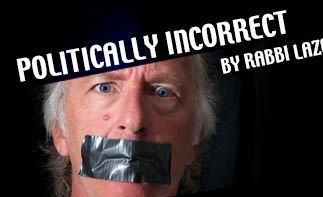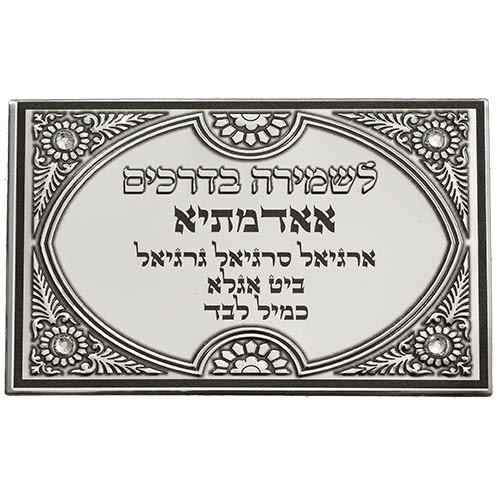
The Mountain’s Testimony
With the recent crises (2017), our neighbors know they need not negotiate, for if they wait long enough, the Israeli government will cave in to their demands…

Sorry for the mixed metaphors and apologies to our avian-loving readers, but repeatedly, the current Israeli government is behaving once again like an ostrich with its head in the ground, releasing inane statements to the press about their desire to maintain “peace” and "negotiate". Our tough neighbors know that they need not negotiate, for if they wait long enough, the Israeli government will cave in to their demands. The current de facto building freeze in so many parts of our Divine-granted homeland can testify to this unfortunate phenomenon.
Israeli-government capitulation once again to the Waqf – the Jordanian Islamic council that controls the Temple Mount – is surreal. Under pressure, Israel dismantled the security apparatus at the entrance to the Temple Mount because the Arabs threatened an uprising. Without even talking about deterrence, which is now an unfortunate joke, we must ask ourselves, what's to prevent murdering more Israeli policemen on the Temple Mount, Heaven forbid? At the Kotel (Western Wall), visitors must go through metal detectors as they as they are required also in Mecca and in the Vatican. Why should the Temple Mount be different? What gives the right to the Waqf and the Jordanian Government to control the Temple Mount?
This head-in-the-ground mentality manifests itself in both ignoring the Torah, but ignoring who the rightful  owner is of the Temple Mount.
owner is of the Temple Mount.
Unfortunately, the world thinks that the Muslims own it. Why? The Waqf, the Islamic clergy and the Jordanian government control it!
But who owns the real right to the Temple Mount? I'll tell the answer in a parable:
The eagle, undisputed monarch of the avian kingdom, wanted to display his magnanimity to all his subjects, the birds of the kingdom. He decided to host a great banquet, making sure that a personal invitation would be sent to every single feathered friend, from great to small. Meticulous care and planning went into every detail, especially the seating arrangements and the catering. The eagle's banquet-committee staff hired four different caterers – one who specialized in fish for the seabirds, a meat specialist for the birds of prey, a third who prepared bug-and-worm delicacies and a fourth who was a vegan, considered best in the business of catering to the plant and seedeaters.
Sitting nobly at the head tish (table) was the eagle king. To his right was one of the kingdom's great heroes, a golden falcon. To the king's left was the head of the palace guard, a giant ostrich. Each bird was seated alongside a giant table placed perpendicular to the king's, each in according to its status and splendor. The brave and the beautiful sat closer to the king, while the lesser and more mundane birds sat further from the king. No one was missing. There were peacocks, rare pheasants, spotted Guinea hens, crowned Polish roosters, flamingos, pelicans, seagulls, magnificent herons, hummingbirds, cockatoos, eloquent parrots – birds of every size and shape, tree-dwellers, desert roadrunners, mountain vultures and kingfishers. To the right and left of the main table were parenchas (bleachers) for the more common birds – the pigeons, sparrows, thrushes, crows, finches and starlings. Swifts and swallows flew around the great royal banquet hall in excitement. This was the unprecedented banquet of avian history.
Suddenly, a little finch from way in the back row of the bleachers flapped its wings and with apparently unbelievable chutzpa (gumption), flew right up to the head table and whispered something in king eagle's ear. All the birds flapped their wings and chirped in excitement. No one knew what was going on. With one fell swoop of his wing, the eagle could have knocked the insolent finch to kingdom come.
After the finch finished whispering, the eagle shuddered. He asked the falcon to move over and make room for the finch. The plain little bird perched down right next to the king!
What was it that the finch said? How did he convince the eagle to allow him to sit in such a place of honor?
The finch said, "Your majesty, do you know where my nest is? It's perched atop the roof of the Holy Temple in Jerusalem. Whenever I want, I fly down to the altar and eat crumbs of the Cohanim's mincha, the priest's meal offering. When I'm thirsty, I drink from the nesachim, the sacrificial libations. So you see, I'm a bird of extreme holiness…"
When word of how the finch persuaded the eagle reached the upper bleachers on the other side of the majestic banquet hall, a young pigeon flapped his wings indignantly and fearlessly flew down to the head table. "Your majesty," he protested, "this finch calls himself holy? Eating crumbs from the altar makes him holy? Your majesty, my blood is on the holy altar!"
The pigeon of course was correct. As one of the ritually pure birds, he is the worthy sacrifice, the bird who serves the real King – Hashem – with all his heart, his entire life.
* * *
In the above parable, the eagle king of course represents Hashem. The Arabs are the finches who are today perched atop the Temple Mount. Yet they have no connection – historical or whatsoever – to Jerusalem and the Temple Mount other than eating the crumbs of Jewish presence there, left over from the destruction of our Holy Temple, may it be rebuilt soon, amen.
We are the pigeons; it's our blood that's soaked deep down in and on the Temple Mount. It therefore was, is and always will be rightfully ours, as the Mount itself can testify.










Tell us what you think!
Thank you for your comment!
It will be published after approval by the Editor.